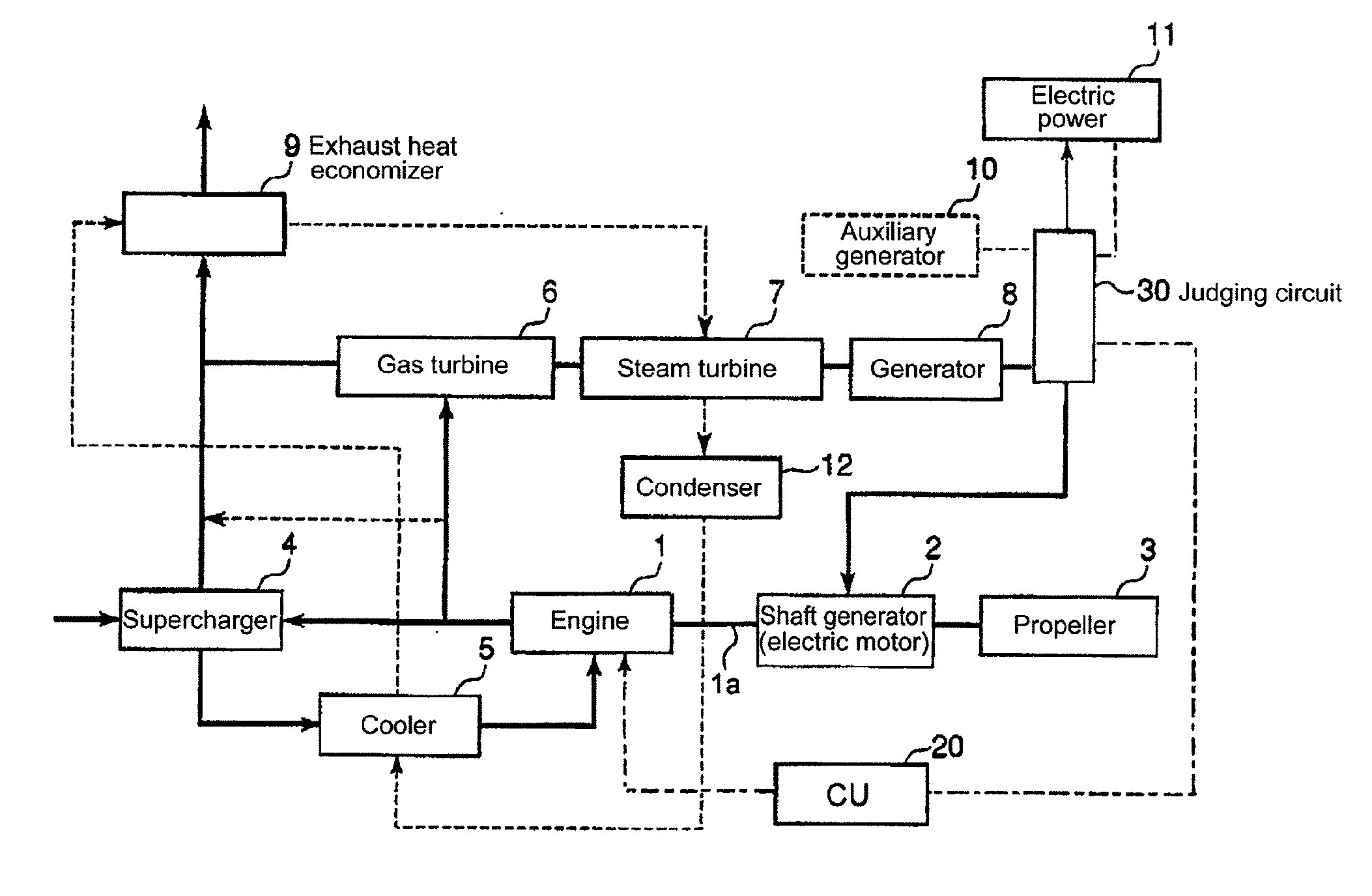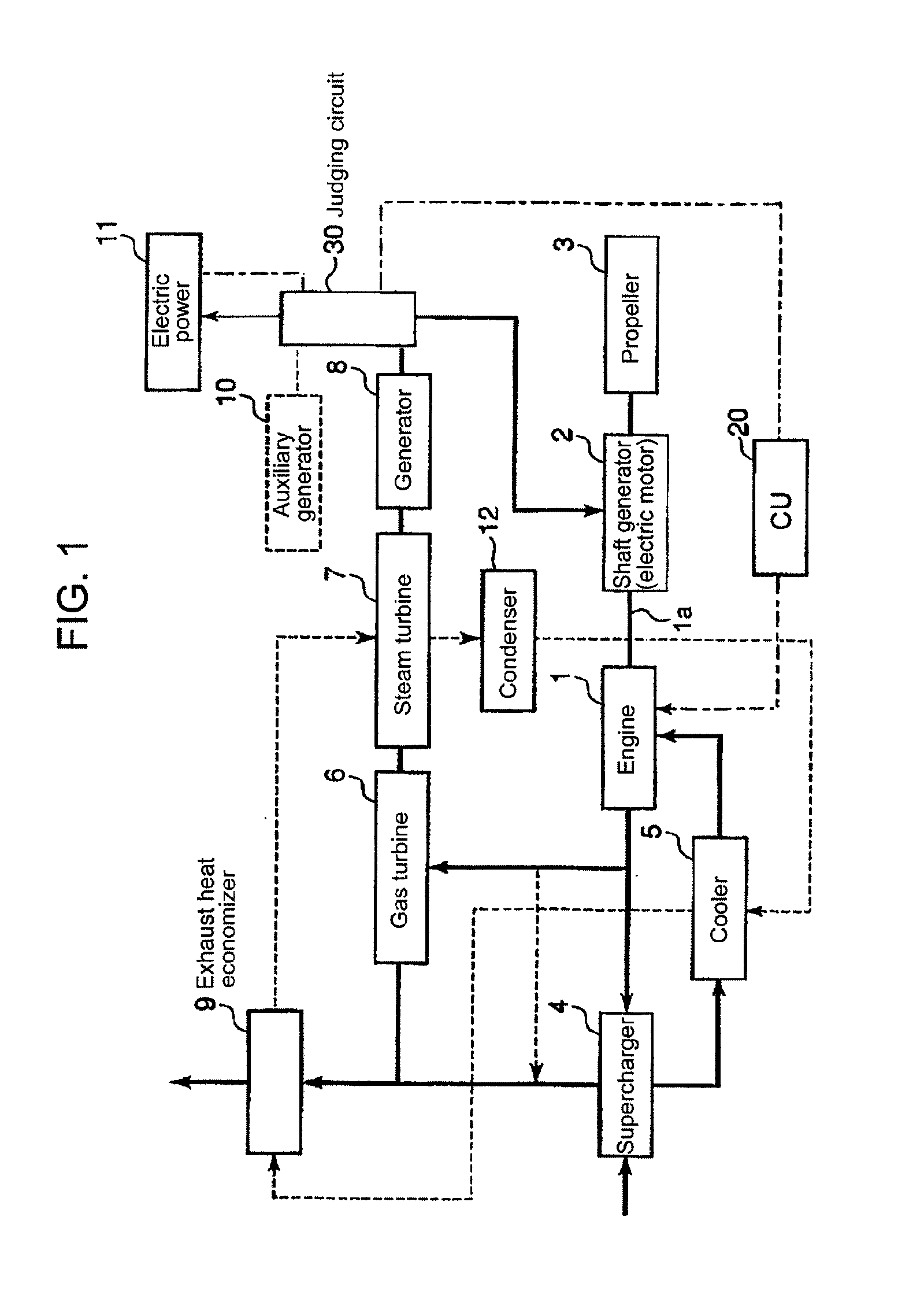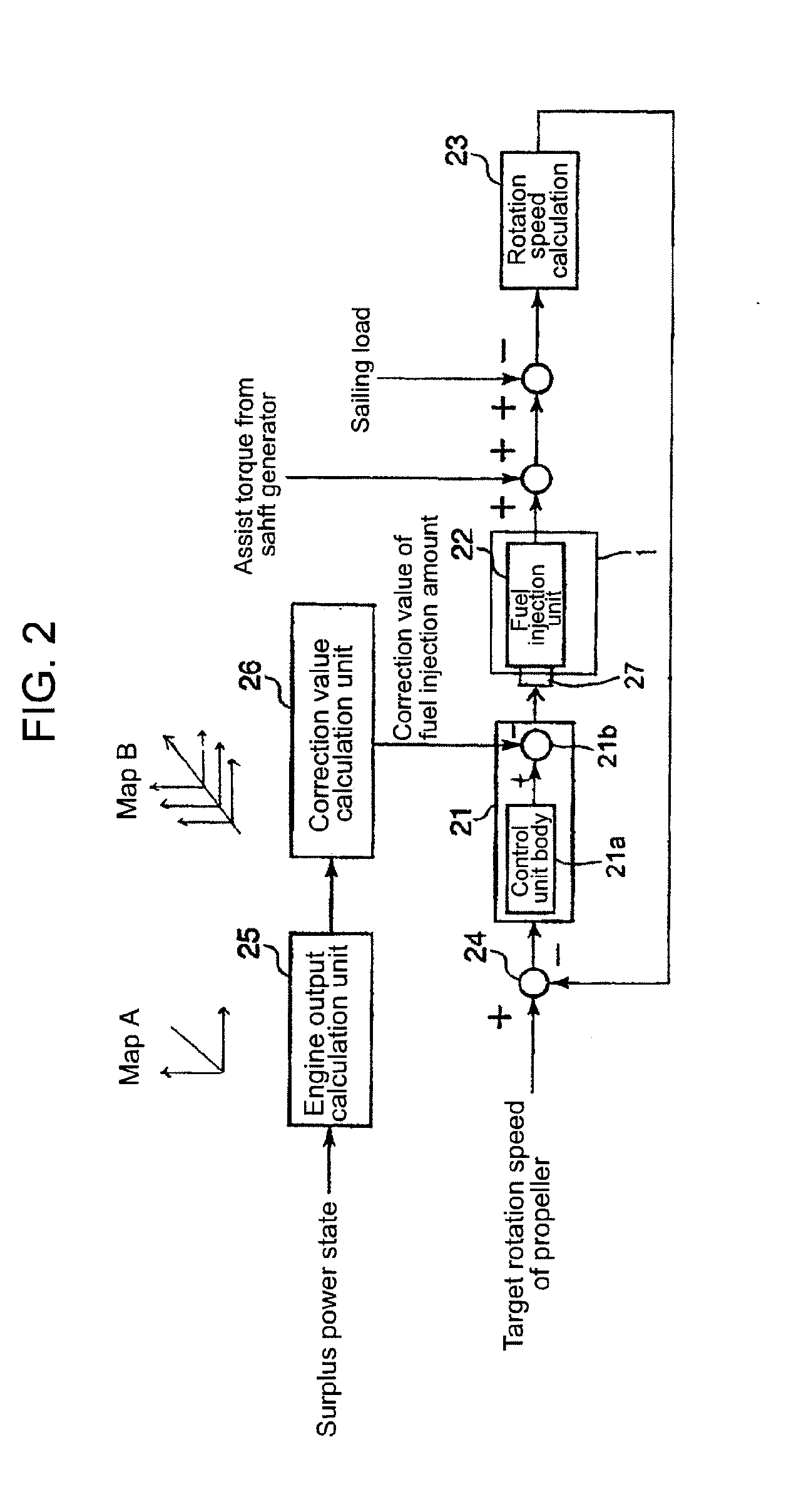Control device for vessel equipped with exhaust heat recovery system and the vessel equipped with the control device
- Summary
- Abstract
- Description
- Claims
- Application Information
AI Technical Summary
Benefits of technology
Problems solved by technology
Method used
Image
Examples
second preferred embodiment
[0058]Now, a fuel injection amount control in relation to a second preferred embodiment is explained in reference to FIG. 5. The general structure of the exhaust heat recovery system of the second preferred embodiment is similar to that of FIG. 1 and thus the structure thereof is not explained further. Further, in the second preferred embodiment, an electronically-controlled engine which controls the fuel injection electronically by an electronic governor or the like is used as the internal combustion engine 1.
[0059]FIG. 5 is a block diagram illustrating components of the fuel injection amount control logic for the vessel in relation to the second preferred embodiment. While the mechanical actuators are used as the control units for controlling the fuel injection in FIG. 2, the electronically-controlled engine is used to control the fuel injection electronically by the electronic governor or the like in FIG. 5.
[0060]In FIG. 5, the target rotation speed of the propeller is obtained f...
third preferred embodiment
[0066]Now, a fuel injection amount control in relation to a third preferred embodiment is explained in reference to FIG. 6. The general structure of the exhaust heat recovery system of the second preferred embodiment is similar to that of FIG. 1 and thus the structure thereof is not explained further. Further, in the third preferred embodiment, an electronically-controlled engine, which controls the fuel injection electronically, is used as the internal combustion engine 1 in the same manner as the second preferred embodiment.
[0067]In the third preferred embodiment, the vessel speed is directly controlled to the target speed requested by the vessel operator. The control logic thereof is illustrated in FIG. 6.
[0068]Different from FIG. 5, FIG. 6 shows a GPS 42 for locating the vessel, a vessel speed calculation unit 43 for calculating an actual output of the vessel speed from data from the GPS, a vessel speed setting unit 44 for setting the target vessel speed based on the request fro...
PUM
 Login to View More
Login to View More Abstract
Description
Claims
Application Information
 Login to View More
Login to View More - R&D
- Intellectual Property
- Life Sciences
- Materials
- Tech Scout
- Unparalleled Data Quality
- Higher Quality Content
- 60% Fewer Hallucinations
Browse by: Latest US Patents, China's latest patents, Technical Efficacy Thesaurus, Application Domain, Technology Topic, Popular Technical Reports.
© 2025 PatSnap. All rights reserved.Legal|Privacy policy|Modern Slavery Act Transparency Statement|Sitemap|About US| Contact US: help@patsnap.com



